Recently I spent a week with my family at a resort on the shore of the Hartebeespoort Dam, that lovely stretch of water in the valley of the Crocodile River in the North West Province of South Africa.
It is a beautiful part of the country nestled in between mountains thought to be among the oldest in the world, the historic and beautiful Magaliesberg range. This is a range of mountains which stretches from the Pilanesberg in the west to Pretoria in northern Gauteng province and was formed about 2 billion years ago. It forms a dividing line between the cooler Highveld region to the south and the warmer, lower Bushveld to the north. The mountains are criss-crossed by valleys formed in the geological upheaval of the formation of the range, with some high cliffs and many crannies, wonderful sites for rock climbers to do their thing.
It is also a historic area, being the home of the World Heritage Site, the Cradle of Human Kind, which includes the famous Sterkfontein Caves in which fossil evidence of the earliest humans has been found, including the famous “Mrs Ples” and the more recently discovered “Little Foot.”
So the range has been the site of human habitation for some 2 million years, but only in the last 20 or so years of that time has the environment of the area been so threatened as it is now.
Indeed the Dam itself is threatened by water hyacynth and algal blooms which are formed by toxic cyanobacteria, making the water unsafe for swimming and hazardous for other aquatic activities, as well as blocking irrigation canals and drainage systems.
While the problems of the dam are caused by run-off from agricultural land and effluent spillage, the insensitivity of people to the environment around them was evident in the resort we were staying at.
The greater area of the resort is taken up with an 18-hole golf course crossed here and there with fairly deep water courses which were for the most part dry at the time of our visit. My daughter and I walked along a number of them, spotting some of the rich variety of birds living in the fairly dense indiginous vegetation, consisting mostly of various varieties of acacia thorn trees.
We found several lost golf balls, to my daughter’s delight, but also found less delightful things in these little wooded valleys: human faeces, bits of plastic, broken bottles, both glass and plastic. The macro-level lack of care evidenced by the deterioration of the water quality in the dam was echoed in the micro-level in these places, which could have been charming.
So on every level during our stay we were confronted with the contrasts of the incredible, sometimes very subtle, beauty of nature and the rather ugly side of human despoliation of nature’s fragile bounty.
I hope the accompanying photos will give some idea of this contrast.

A tranquil part of the dam overlooked by the Magaliesberg
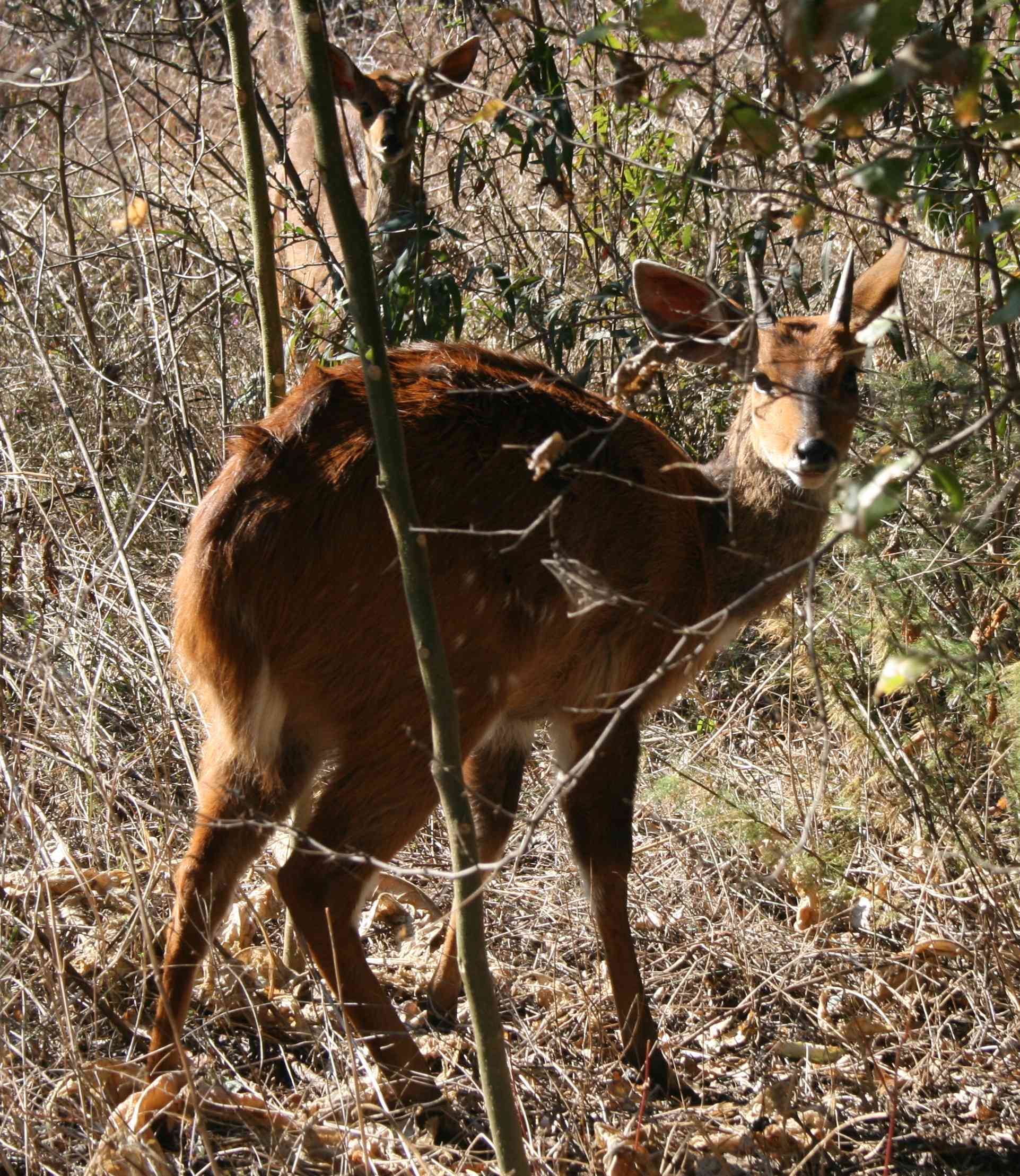
A bushbuck and young in a wooded part of gthe resort
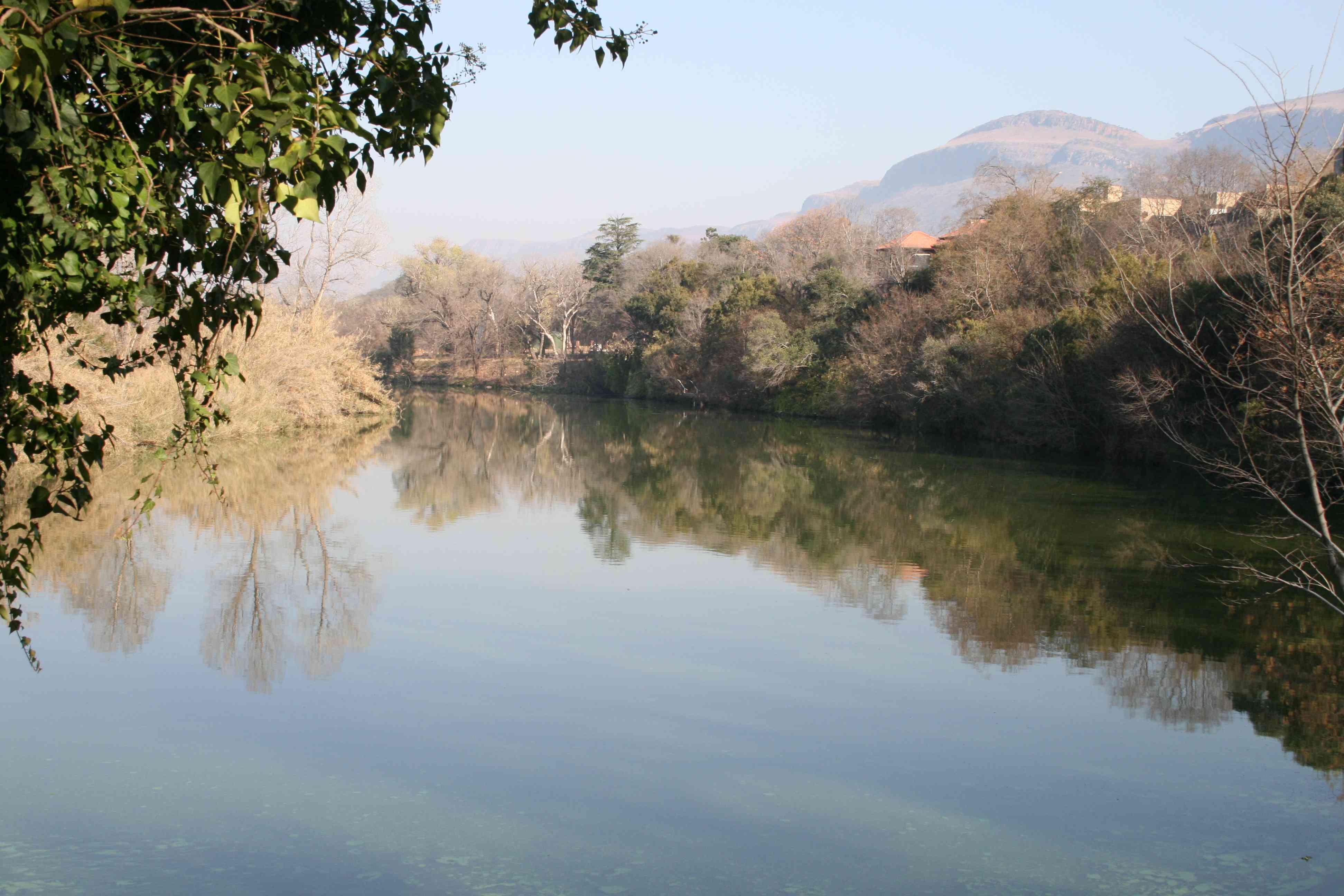
Early morning reflections on the water look inviting, but there's trouble in that water
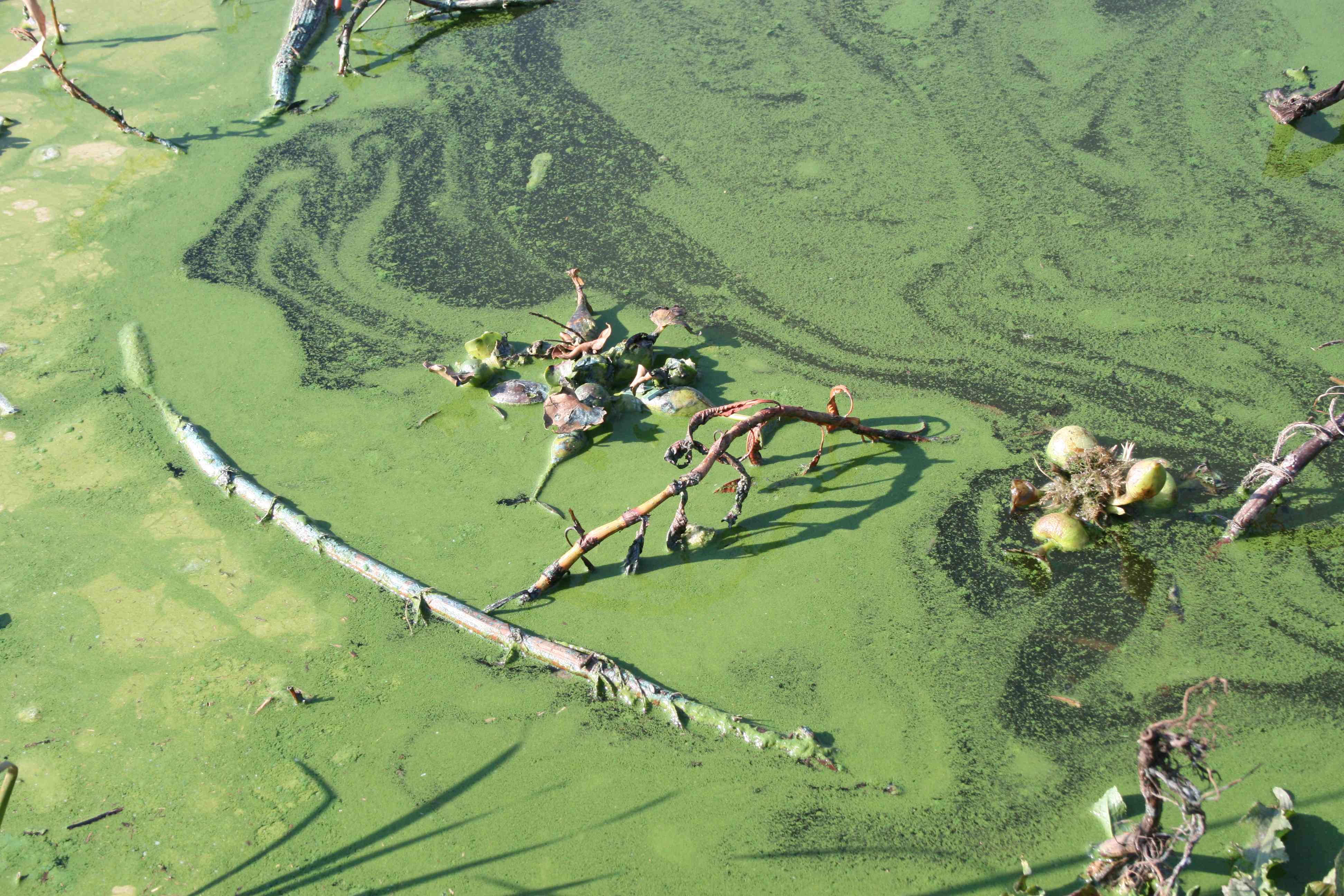
Blue-green algae (cyanobacteria) and water hyacynth make the water toxic to humans
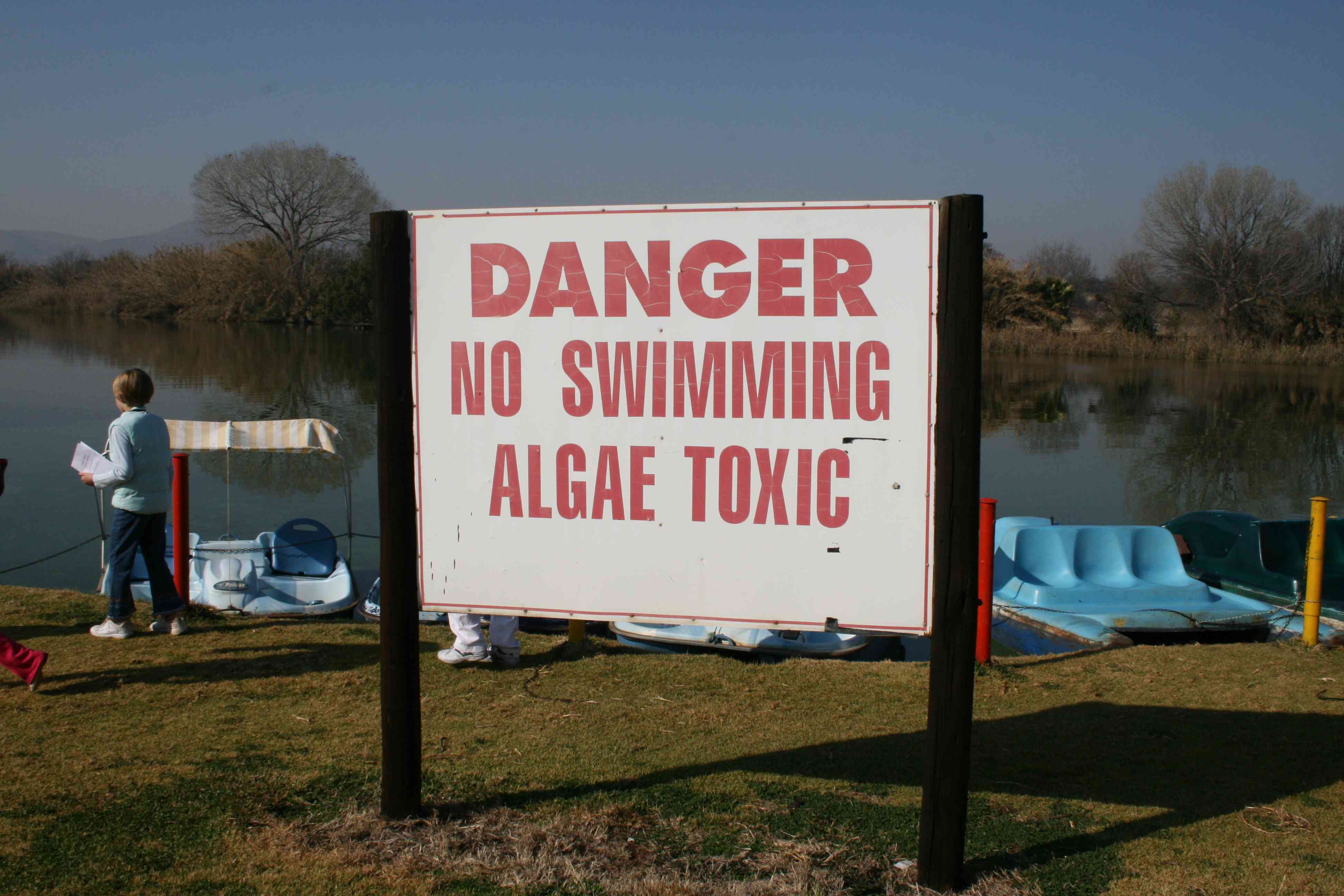
The reality
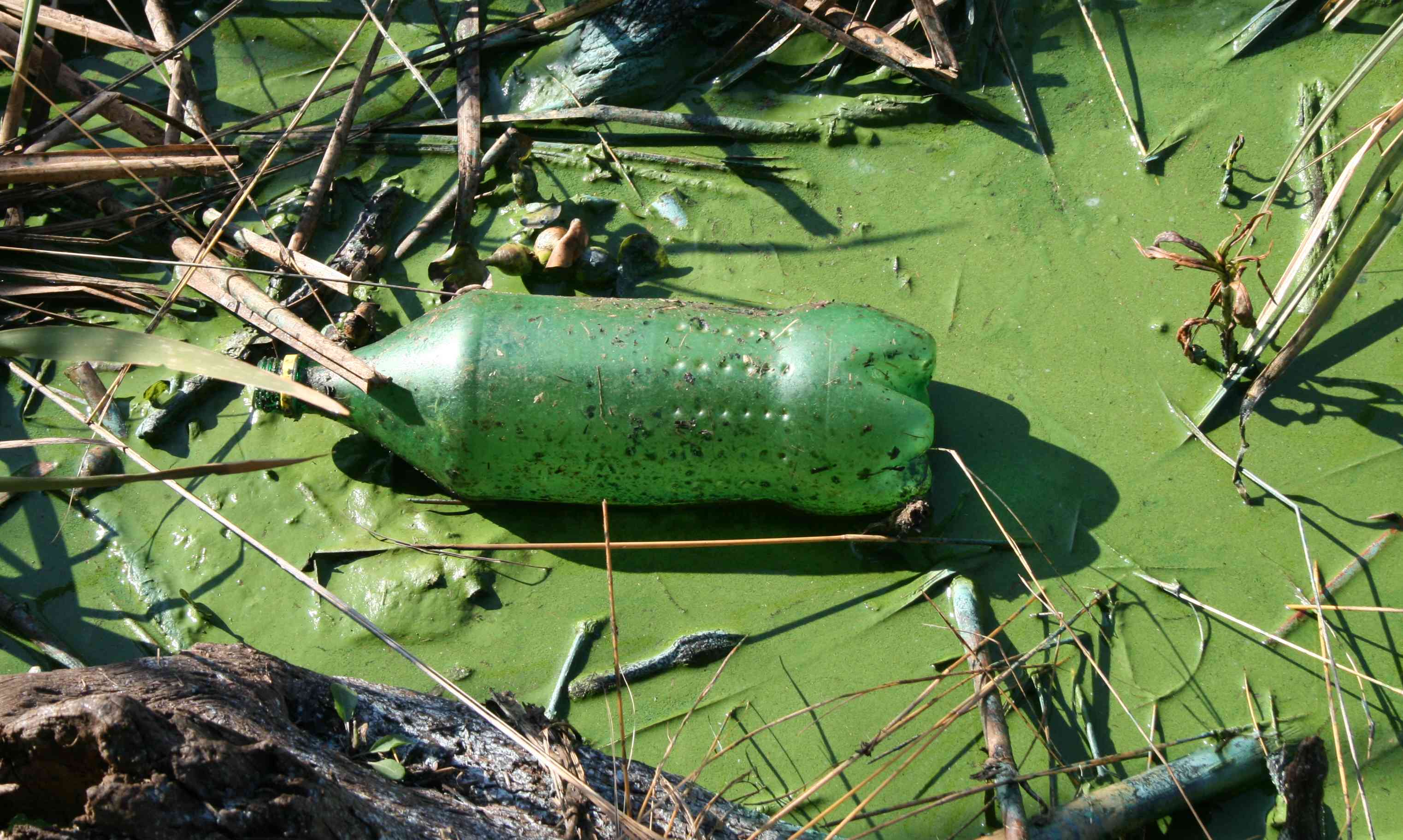
Our insensitivity to our surroundings is sometimes breathtaking!
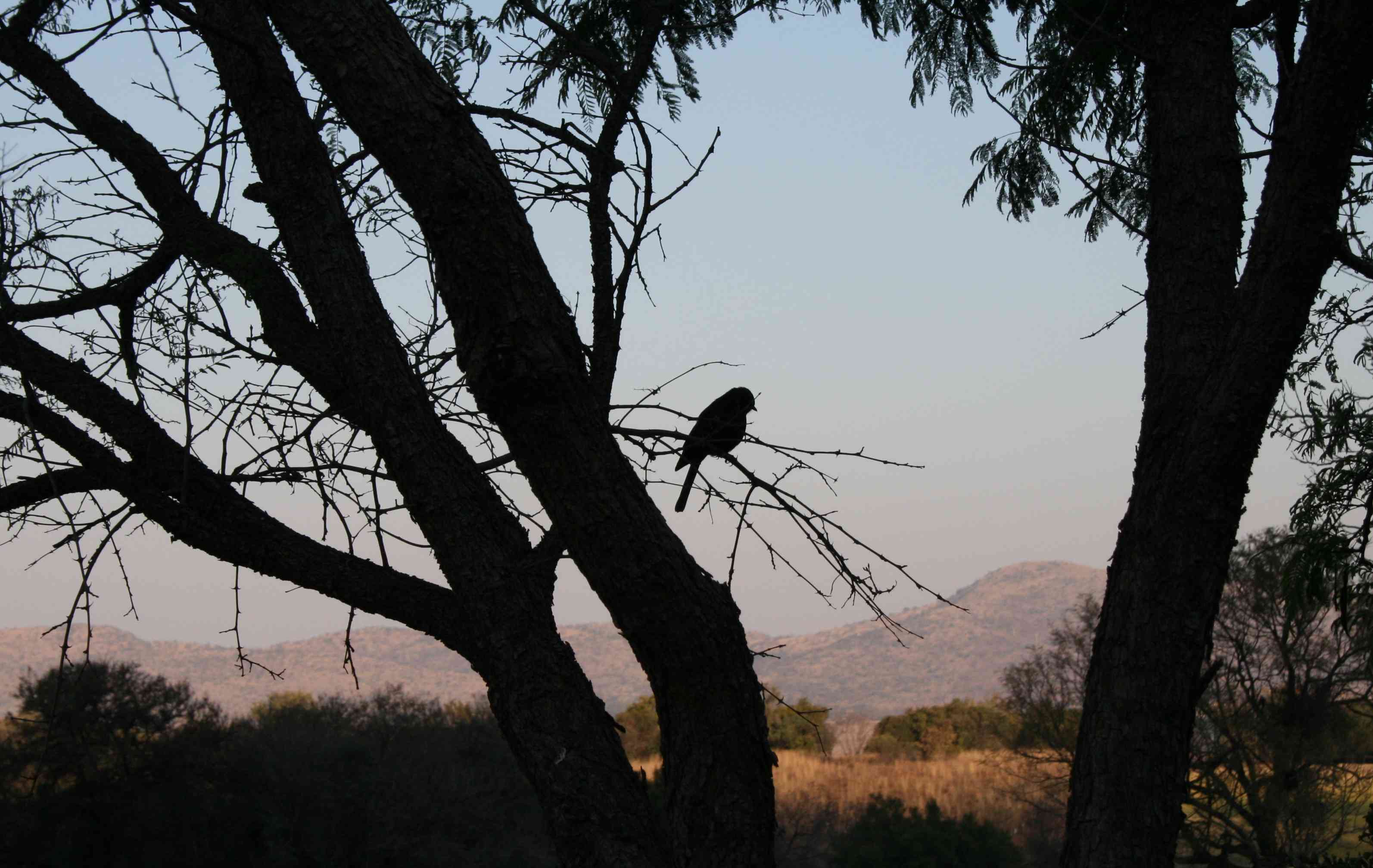
A black flycatcher finds a perch at sunset

Speak Your Mind